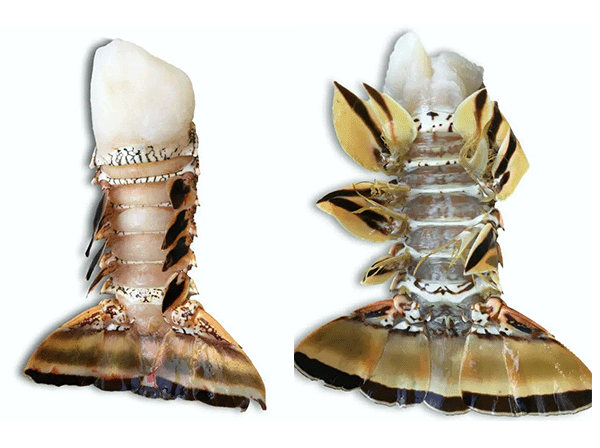
IT’S NOT THE ORIGIN,
IT’S NETUNO
QUALITY YOU CAN SEE
“You get what you pay for” can be misleading when suppliers use additives in their meat to soak up water prior to freezing. This practice called “soaking” or “glazing” adds weight to their items and can be an expensive mistake for buyers when purchasing high market value items, such as lobster tails. Once thawed, that water disappears, leaving you with less meat than you purchased. Our Lobsters are sodium tripolyphosphate free, so you really do get what you pay for. That’s a NETUNO promise.
HOW TO SPOT THE DIFFERENCE

Treated/Soaked Lobster (Left) vs. Natural Lobster (Right)
To help you make an educated choice, we’ve put a treated lobster and an untreated lobster next to each other. The treated lobster looks overly plump. This is an indication of soaked or chemically treated lobster.
This larger, whiter lobster may look more attractive to the unaware buyer, however, raw lobster meat varies in color from white to grey, to even orange, depending on their diet. Lobster shell color also varies depending on the depth of the water. Shallow water lobsters tend to have a lighter color shell from more exposure to sunlight, where lobsters caught in deeper waters tend to have a darker shell.

Treated/Soaked Lobster (Left) vs. Natural Lobster (Right)

Treated/Soaked Lobster vs. Natural Lobster. Notice that the underside looks swollen (left), the underside is flat (right).
All meat will turn white when cooked and has the same flavor profile. All shells will turn bright red or orange when cooked. The color of the lobster when raw has no effect on your customer’s experience. Taking a closer look at the images, you’ll notice the underside of the first lobster looks swollen. The second image shows the underside is flat. These are key indicators to help you determine the quality of the lobster you are buying.


